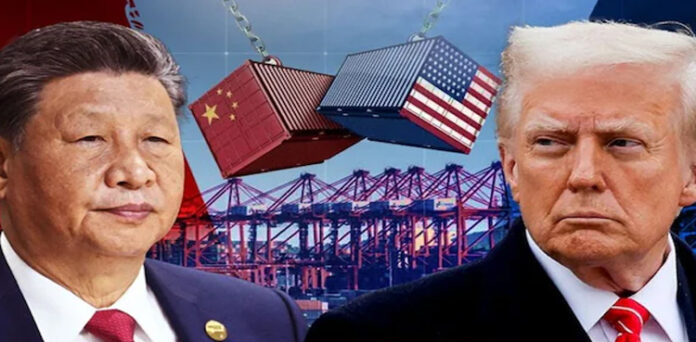China's economy demonstrated resilience in the first quarter of 2025, achieving a GDP growth rate of 5.4%, surpassing economists' forecasts . This robust performance occurred despite the looming tariffs imposed by former President Trump, which initially raised concerns about potential economic stagnation. The National Bureau of Statistics acknowledged that while exports grew significantly, the external environment remained complex and challenging . Nevertheless, China's ability to maintain strong export figures—evidenced by a year-on-year growth of 12.4% in March—indicates a capacity to adapt to external pressures . The official GDP figures, released by China’s National Bureau of Statistics on Wednesday, matched the year-on-year growth rate in the fourth quarter despite Trump’s first salvo of additional 20 per cent tariffs taking effect. The growth exceeded Beijing’s full-year target for 2025 as well as the 5.1 per cent forecast by analysts in a Reuters poll. But economists expect China’s economy to come under pressure as the full US levies take force.
Pinned down by tariffs that threaten to freeze trade with its biggest customer, China’s economy is facing one of its greatest challenges in years.
Growth in the early months of this year was propelled by rapidly rising exports and the manufacturing investment and production necessary to support those exports. Sales of electric cars, household appliances, consumer electronics and furniture were also strong because of ever-widening government subsidies for buyers.
Indeed, quarter-on-quarter momentum highlighted a softer underbelly, with the economy expanding 1.2% in the first quarter, slowing from 1.6% in October-December.
For 2025, the economy is expected to grow at a subdued 4.5% pace year-on-year, the Reuters poll showed, slowing from last year's 5.0% pace and falling short of the official target of around 5.0%. Global investment banks have sharply slashed their China GDP forecasts for this year.
Despite these positive indicators, challenges persist. Import figures fell by 7% year-on-year during Q1, suggesting insufficient domestic demand that could hinder future growth prospects . Analysts from UBS and Goldman Sachs have already revised their forecasts downward for subsequent years due to anticipated tariff impacts . As China navigates this precarious economic landscape marked by significant trade tensions with the United States, its response will be critical in sustaining momentum amidst evolving challenges.
Read more
PSG cling on to reach semis and win over Aston Villa 2-4 Android getting automatic security restart feature.Sarah H
Also on site :
- Michael Mosley’s family say ‘it’s hard to believe that a year has passed’ since his death
- How to prevent sports injuries in children
- 'You need to charge more': The San Francisco dive bar that refuses to raise prices

